Iranian friends and our guide/interpreter alike think we’re mad, but we persist with our plan to spend 10 days of our month-long visit to Iran in the polluted and architecturally unattractive capital, Tehran. It’s a city most organised tours dispose of in a day or two with a quick visit to the crowded and bling-choked Jewellery Museum, a glimpse of the Azadi Tower, and a stop at one of the former Shah’s flashily opulent palaces. For my part, eleven museums, six art galleries and three bazaars later – not to mention two mountain trips, one cinema visit and a memorable night at home with a Tehrani family – I’m glad we persevered.
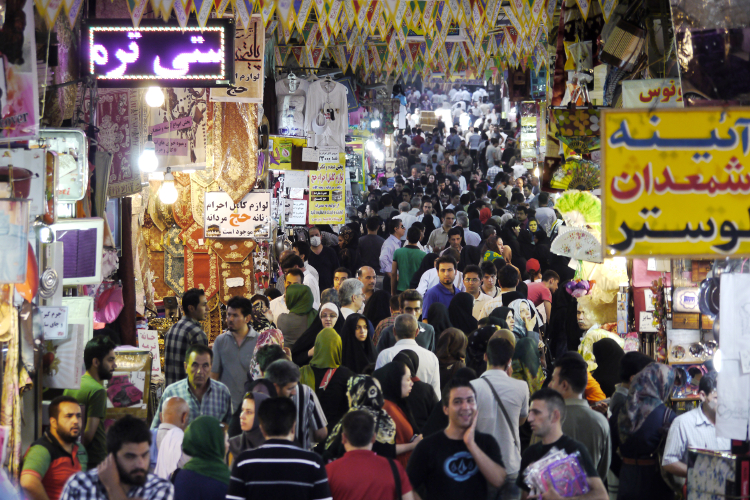
The plaza outside the main bazaar is a great spot for people-watching. The streets are teeming, not with mullahs or gun-toting police as I had anticipated, but with seemingly carefree shoppers, armed with mobile phones. There are lots of head-to-toe black chadors, but just as many women wear cheerful loose-fitting headscarves, tight jeans and dramatic makeup. Consumer goods are plentiful and restaurants are crowded
Of course, appearances aren’t everything, and repression is still part and parcel of life here. We catch one small glimpse of the Islamic Republic’s other face when, from a bus window we watch a squad of Ershad, the morality police, hustle a young woman into a police van for wearing ‘bad hijab’ – a headscarf that reveals too much hair and neck – and an enormous pair of earrings.
A fellow passenger explains in perfect English what is happening. Soon after, when the bus passes a cinema, she reveals that she’s an actress, and pointing to a huge bill-board advertising her latest film asks bashfully, 'Would you like to come and see it?' So off we go to a huge cineplex to watch a smart comedy that pokes gentle fun at religious fanaticism. There isn’t an empty seat in the house. It’s all in Farsi of course, but over spicy chicken wings in the cinema’s fast food outlet, our new-found friend has explained the plot, and we laugh with the rest.
Meeting Tehranis is remarkably easy and richly rewarding. As we try to buy saffron, piled high at the very un-touristy Tajrish bazaar, a young woman asks in broken English if we need help. We get talking. ‘N’ is an artist, and one of her friends has an exhibition at the renowned Seyhoun art gallery. We’re invited along, and are soon chatting to half a dozen of the city’s brightest young painters, N’s friends, who excitedly show us their work on smart phones and tablets. We adjourn to a working studio, home to illicit life drawing classes, where we drink tea and leave with a fabulous landscape painting that will grace our living room.
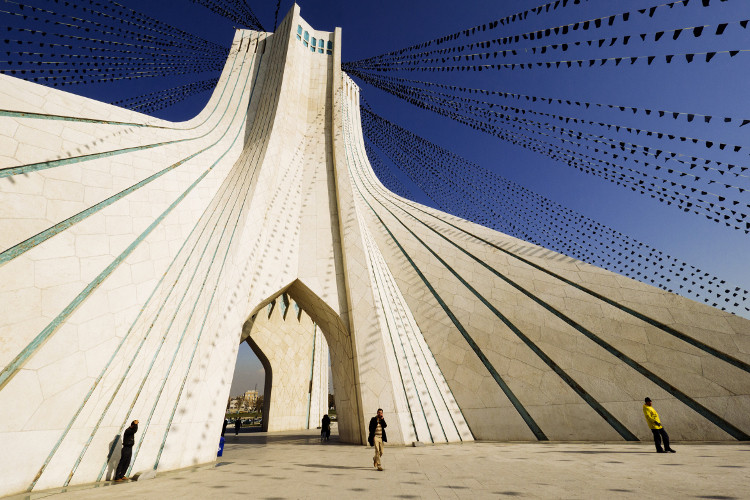
Next day, in the unpeopled galleries of the Museum of Contemporary Art, a staff member tells us 3,000 works by western painters like Picasso, Van Gogh, Bacon, etc – all deemed degenerate – languish in the basement while ‘safe’ Iranian art bedecks the walls. ‘That’s why no-one bothers coming,’ our informant asserts. Later, in the Carpet Museum next door, an attendant eagerly points out some 18th century Persian rugs depicting erotic imagery where more than female heads are laid bare. ‘How come they’re still on show?’ I ask. He just smiles back.
As the only foreigners in most of the places we visit, we are an endless source of interest to shyly curious Tehranis. One such encounter, during a lung-reviving mountain walk at Darband, ends with an invitation to dinner in the family home. The women all wear party dresses and have their heads and arms uncovered, illegal, even at home, when a male stranger is present. French wine and Russian vodka, smuggled from Iraq, are offered, and after an unforgettable meal of lamb with walnuts and pomegranate, we settle down to watch television.
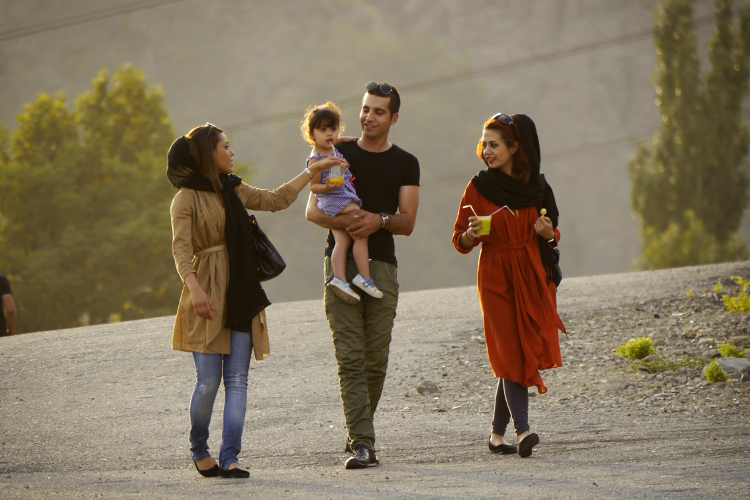
Iranian pop videos blare out, ornamented with minimally dressed gyrating dancers. Again, I am puzzled. ‘Tehrangeles’, our host explains - the Iranian diaspora in Los Angeles who beam uncensored satellite channels into the Islamic Republic. ‘Receivers were banned here in 1995’ we are told, ‘but most people have contraband equipment, and if it’s confiscated in an official raid,’ our host adds with a laugh, ‘the technical guys who take it will come back later and install even better gear. But it will cost you.’
Zigzagging back to our hotel in a bone-shaking taxi without seatbelts, our driver, a talkatively wise man with reasonable English, points out ranks of enormous SUVs – gleaming Porsches, Mercs, BMWs and Audis - waiting for their owners to spill out of fashionable and expensive eateries in Tehran’s northside. ‘Sanctions’, he says, ‘have made a small number of businessmen with political friends fantastically rich.’
Am I imagining it, or is it beginning to feel more and more like home here?
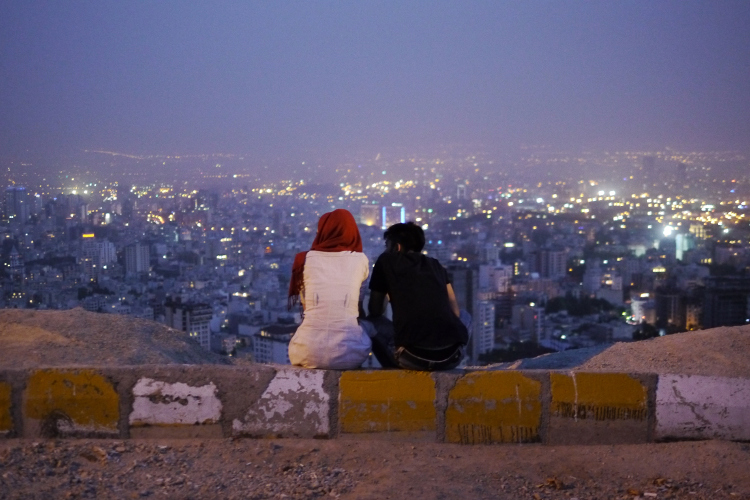
Tehran’s Top Five
Glass and Ceramics Museum
Stunning artefacts from the 2nd millennium BC onwards, beautifully displayed and annotated. We were the only visitors which meant we could ooh and aah without embarrassment.
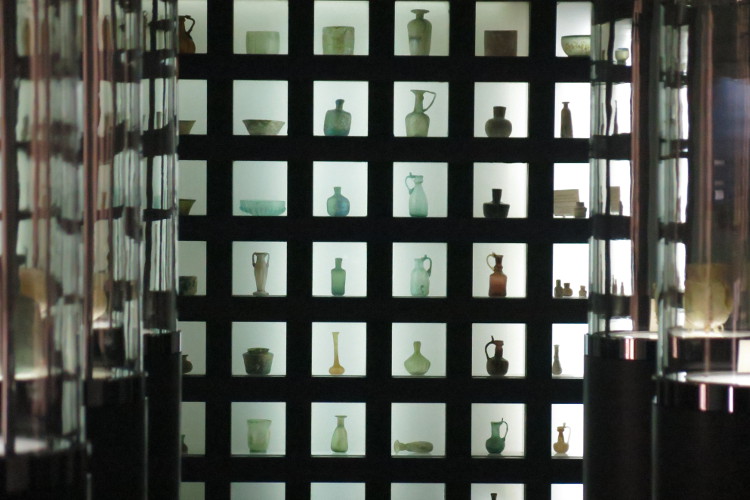
Reza Abbasi Museum
The exhibits, starting from around 2000BC, are without exception quite exquisite – especially the gold work - and as few people seem to visit, you might have it entirely to yourself.
Jameh Bazaar
A massive Asian flea market staged on Fridays only, when the main bazaar is closed. Come prepared to buy stuff you neither need nor want but will treasure for ever. Increase the pleasure by haggling hard.
Carpet Museum of Iran
Look out for two enormous carpets depicting (among others) Napoleon, and see if you can spot the difference in how he’s depicted. The carpets are beautiful but unlike its Turkish equivalent in Istanbul, this museum’s signage isn’t great.
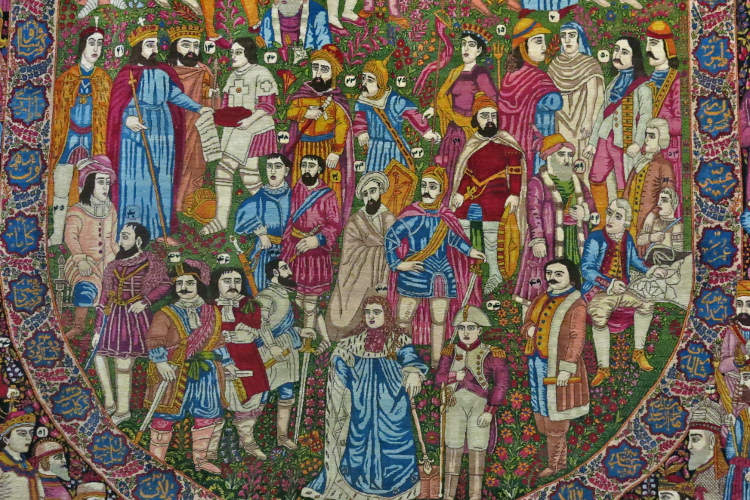
Taxi ride across town
You’ll probably survive it, and you’ll certainly never forget it. Tehran traffic seems chaotic yet it flows smoothly. The secret is in the weaving and dodging performed by drivers who appear mad but who never lose their tempers, let alone their bumpers.